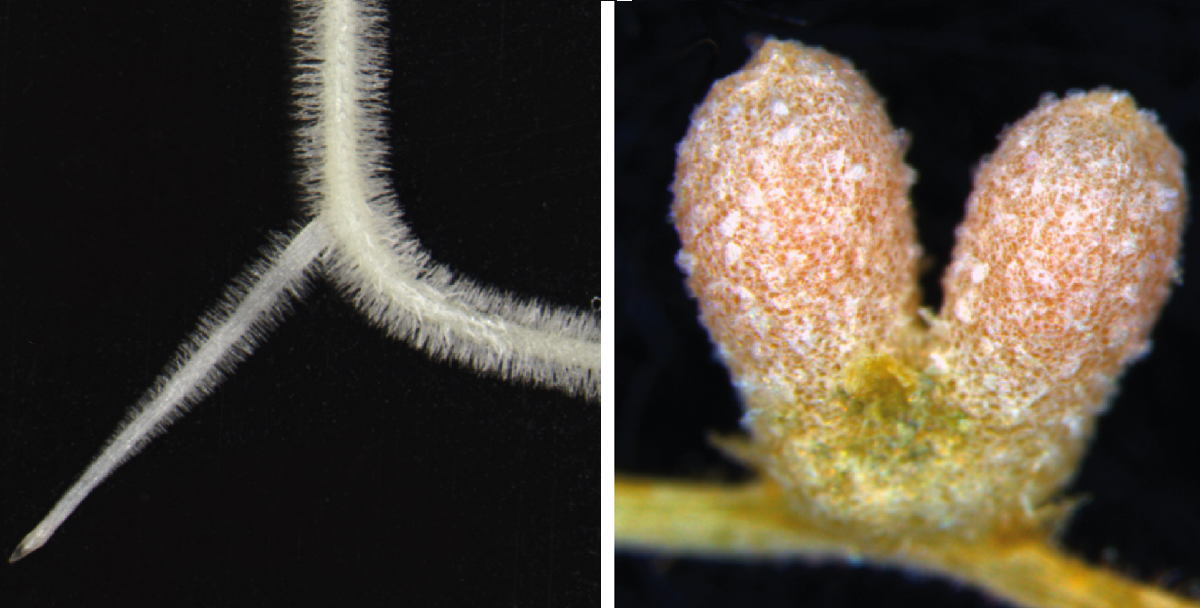
Scientists Investigate Plant Nodule and Lateral Roots, Gain Another Step to Developing Self-Fertilizing Crops
November 20, 2019| |
A group of scientists led by the Cambridge University have recently published the results of their study that investigated how a plant's nodule and lateral root development are related and that both share overlapping development programs despite differential induction. These new findings could contribute to the research and development of self-fertilizing crops.
The research team wanted to prove that the long-standing theory that the developmental steps of a plant's lateral roots and nodules are shared. Their work also looked into deciphering the symbiotic communications that occur between plants and rhizobial bacteria when converting nitrogen from the atmosphere into ammonium to be used for the plant's growth.
Microscopic and gene expression analysis were used to track cell development and how hormones played a part in the early stages of lateral root and nodule formation. The team's findings included how a plant's nitrogen-fixing nodules and lateral roots grow the same way using the same program, which would support the fact that a significant part of the machinery needed to form nodules is also present in non-nodulating plants. Another finding was that the accumulation of the plant hormone auxin is present in both lateral root and nodule development. However, its activation differs in the two plant parts, as auxin activation in nodules involves a second plant hormone, cytokinin. Further investigation found that cytokinin along with a key protein that acts as a master regulator, called NIN, were found to control the initiation of nodules. NIN is a key player in legume plants, as it allows the formation of nodules by activating the lateral root organogenesis.
With these results, researchers believe that further studies should focus on the plant process of how nodules are produced, instead of having to engineer an entire nodule development program. Their findings support that many processes involved in nodulation are more common than first thought of, which encourages them that engineering nitrogen fixation into other crops is possible without having to undergo extensive plant alterations. Such development can one day lead to crops that do not rely on chemical fertilizers to compensate for nitrogen deficiencies in the soil.
Read the full article in Current Biology.
| |
You might also like:
- Discovery of Genes Could Help Reduce Fertilizer Pollution in Waterways
- Fundamental Discovery Key to Creating Better Crops
- Researchers Discover How Protein Connecting Calcium and Hormone Regulates Plant Growth
Biotech Updates is a weekly newsletter of ISAAA, a not-for-profit organization. It is distributed for free to over 22,000 subscribers worldwide to inform them about the key developments in biosciences, especially in biotechnology. Your support will help us in our mission to feed the world with knowledge. You can help by donating as little as $10.
-
See more articles:
-
News from Around the World
- Experts Use Microparticles to Fortify Foods with Nutrients
- Verdeca's HB4® Drought and Herbicide Tolerant Soybeans Get Approval in Paraguay
- Biotechnology Gets Attention at Senate of the Philippines
- SEARCA BIC's Agri-biotech Boot Camp Puts the Spotlight on Youth in Agriculture
- Experts Unlock Key to Photosynthesis
- Resistance Genes for Deadly Ash Tree Disease Discovered
-
Research Highlights
- 'Designer' Plants Developed to Combat Environmental Challenges
- Scientists Investigate Plant Nodule and Lateral Roots, Gain Another Step to Developing Self-Fertilizing Crops
-
Plant
- Gene Editing Used to Develop Vitamin A-fortified Rice
- Biotech Expert Panel: CRISPR Technology Can Transform Agricultural Production
-
Read the latest: - Biotech Updates (January 14, 2026)
- Gene Editing Supplement (December 17, 2025)
- Gene Drive Supplement (February 22, 2023)
-
Subscribe to BU: - Share
- Tweet

